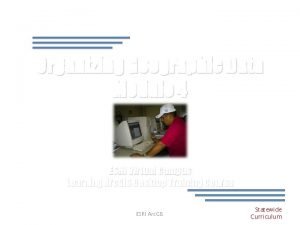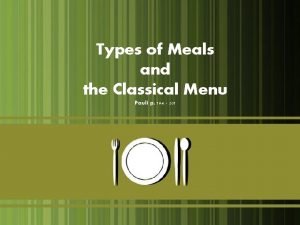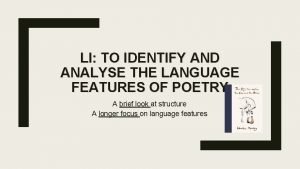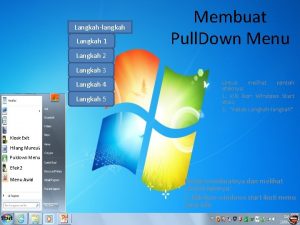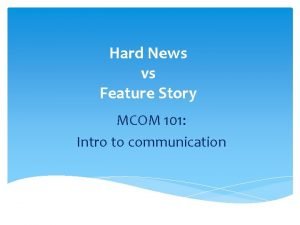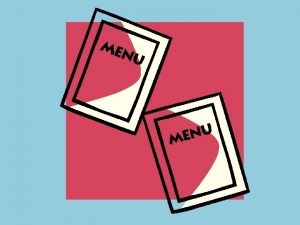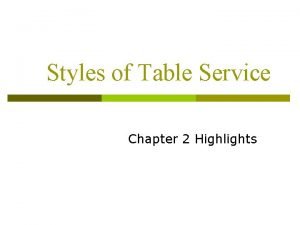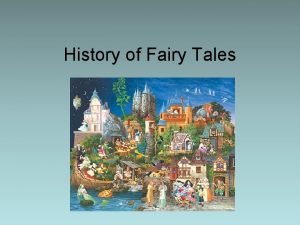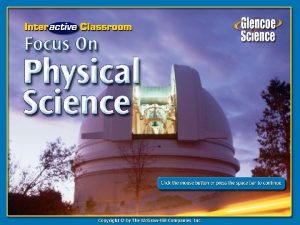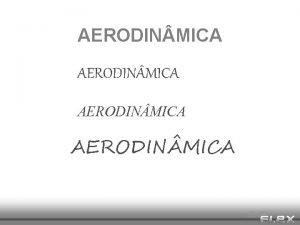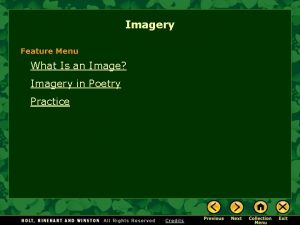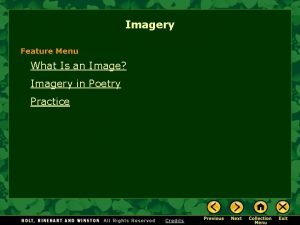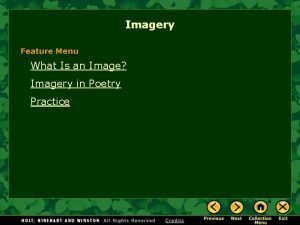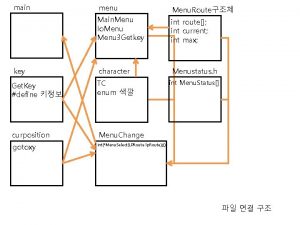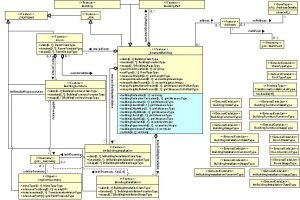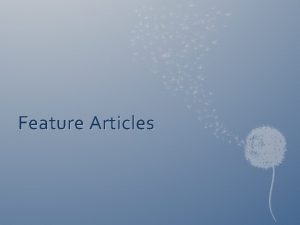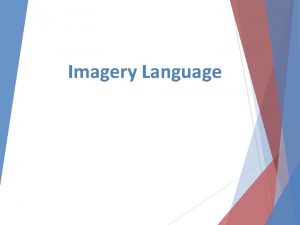Imagery Feature Menu What Is Imagery Imagery and




















- Slides: 20

Imagery Feature Menu What Is Imagery? Imagery and Feelings Practice

What Is Imagery? An image is a representation of anything we can touch see taste hear smell

What Is Imagery? Imagery is language that • appeals to our five senses • creates images in our minds Give me the splendid silent sun, with all his beams full-dazzling; Give me juicy autumnal fruit, ripe and red from the orchard; Give me a field where the unmow’d grass grows; Give me an arbor, give me the trellis’d grape; from “Give Me the Splendid, Silent Sun” by Walt Whitman

What Is Imagery? Quick Check It must be on charcoal they fatten their fruit. I taste in them sometimes the flavour of soot. And after all really they’re ebony skinned: The blue’s but a mist from the breath of the wind, A tarnish that goes at a touch of the hand. To which senses does this passage appeal? from “Blueberries” by Robert Frost [End of Section]

Imagery and Feelings Poets may use imagery to convey a feeling about their subject or to create a certain mood. • What feelings do T. S. Eliot’s images of fog evoke? The brown waves of fog toss up to me Twisted faces from the bottom of the street, And tear from a passer-by with muddy skirts An aimless smile that hovers in the air And vanishes along the level of the roofs. from “Morning at the Window” by T. S. Eliot

Imagery and Feelings Now read Carl Sandburg’s lines about fog. • How does the speaker of this poem feel about fog? How is that feeling different from that Eliot’s imagery creates? The fog comes on little cat feet. It sits looking over harbor and city on silent haunches and then moves on. from “Fog” by Carl Sandburg [End of Section]

Practice Think of an object or scene, and then choose a particular mood. Jot down imagery— sensory words—related to your object or scene and mood. Your notes can be raw material for a poem. Object or scene: Mood: Sights: Smells: Sounds: Tastes: Touch:

The Sounds of Poetry Feature Menu Rhythm in Poetry Meter Free Verse Rhyme Alliteration and Onomatopoeia Practice

Rhythm in Poetry Like music, poetry is based on rhythm—the alternation of stressed and unstressed sounds that makes the voice rise and fall.

Rhythm in Poetry Poetic rhythm can take the form of • meter a strict rhythmic pattern of stressed and unstressed syllables in each line • free verse a loose kind of rhythm that sounds like natural speech [End of Section]

Free Verse Free verse is poetry that does not have a regular meter or rhyme scheme. Never, in all your career of worrying, did you imagine what worries could occur concerning the flying cat. You are traveling to a distant city. The cat must travel in a small box with holes. —from “The Flying Cat” by Naomi Shihab Nye Because it is “free” of metric rules, free verse sounds more like prose or everyday speech than formal poetry. The Imagists [End of Section]

Rhyme is the repetition of the accented vowel sound all subsequent sounds in a word. Listen to this excerpt. What words rhyme? A slumber did my spirit seal; I had no human fears: She seemed a thing that could not feel The touch of earthly years. from “A Slumber Did My Spirit Seal” by William Wordsworth

Rhyme The chiming sounds of rhyme • punctuate the poem’s rhythm • give the poem structure • make the poem easier to remember

Rhyme End rhyme is rhyme that occurs at the ends of lines. This knowledge, from an Angel's voice Proceeding, made the heart rejoice —from “The Pilgrim’s Dream” by William Wordsworth Internal rhyme is rhyme within a line. The sails at noon left off their tune, —from “The Rime of the Ancient Mariner” by Samuel Taylor Coleridge

Rhymes may be exact or approximate. • In an exact rhyme, the words rhyme perfectly. heart—start flicker—thicker ordering—bordering • In an approximate rhyme, the sounds are similar but not exactly the same. light—late whisper—winter bays—waves

Rhyme Quick Check All suddenly the wind comes soft, And Spring is here again; And the hawthorn quickens with buds of green, And my heart with buds of pain. Identify the exact and approximate end rhymes in these stanzas. My heart all Winter lay so numb The earth so dead and frore That I never thought the Spring would come Or my heart wake any more. —from “Song” by Rupert Brooke [End of Section]

Alliteration and Onomatopoeia Alliteration is the repetition of consonant sounds in words that appear close together. Listen to this excerpt. What consonant sound is repeated? A long, long yellow on the lawn, A hubbub as of feet; Not audible, as ours to us, But dapperer, more sweet; from “A long, long yellow on the lawn” by Emily Dickinson More about alliteration

Alliteration and Onomatopoeia is the use of words that sound like what they mean. Listen to this excerpt. What word is an example of onomatopoeia? Here the water went down, the icebergs slid with gravel, the gaps and the valleys hissed from “Prairie” by Carl Sandburg

Alliteration and Onomatopoeia Quick Check In this excerpt, find at least two examples of alliteration and onomatopoeia. I shall come near your window, where you look out when your eyes open in the morning, And there I shall slam together bird-houses and bird-baths for wing-loose wrens and hummers to live in, birds with yellow wing tips to blur and buzz soft all summer, from “Broken-face Gargoyles” by Carl Sandburg [End of Section]

The End
 Feature dataset vs feature class
Feature dataset vs feature class Isolated feature combined feature effects
Isolated feature combined feature effects Difference between classical menu and modern menu
Difference between classical menu and modern menu What is setting and plot
What is setting and plot L i planritning
L i planritning Contoh perencanaan menu
Contoh perencanaan menu Fungsi menu microsoft excel
Fungsi menu microsoft excel Sebutkan bagian-bagian browser mozilla firefox
Sebutkan bagian-bagian browser mozilla firefox Menu pull down exit terdapat pada menu..
Menu pull down exit terdapat pada menu.. Berlo model of communication
Berlo model of communication Short feature story examples
Short feature story examples Title bar berfungsi untuk ………
Title bar berfungsi untuk ……… Menu planning is an art. explain.
Menu planning is an art. explain. The menu expresses the concept and theme through
The menu expresses the concept and theme through What is english service
What is english service Hans and gretel egypt menu
Hans and gretel egypt menu Liquids and solids menu
Liquids and solids menu Lets decide
Lets decide Front and main menu
Front and main menu Sms menu and sms polls
Sms menu and sms polls French classical menu sequence
French classical menu sequence
